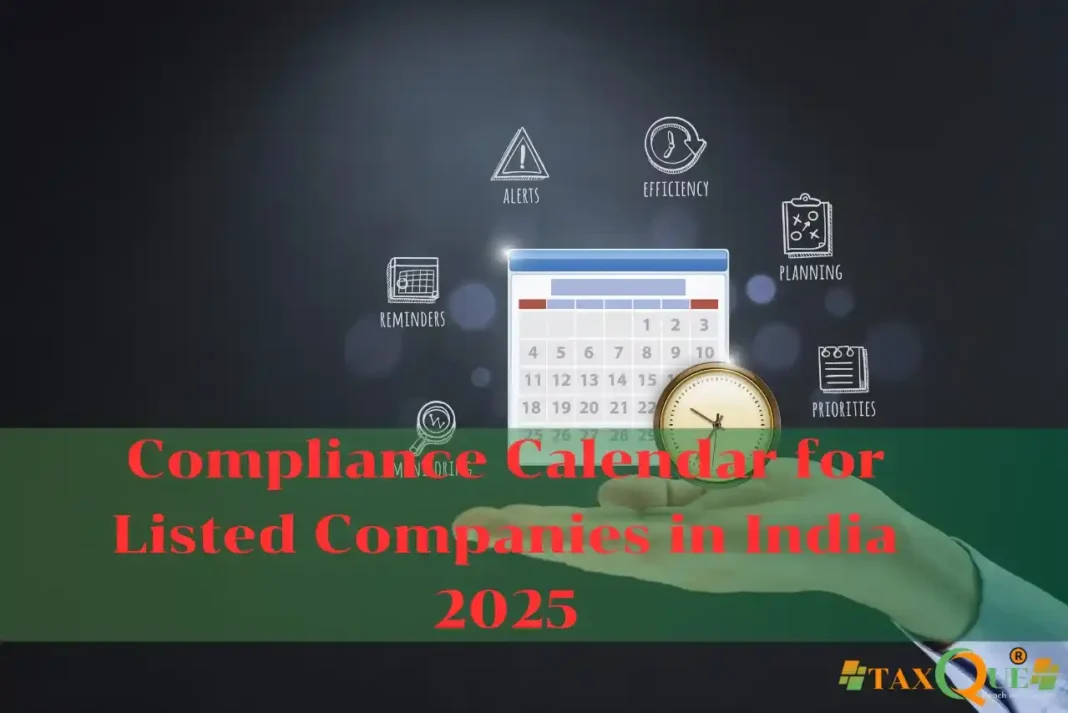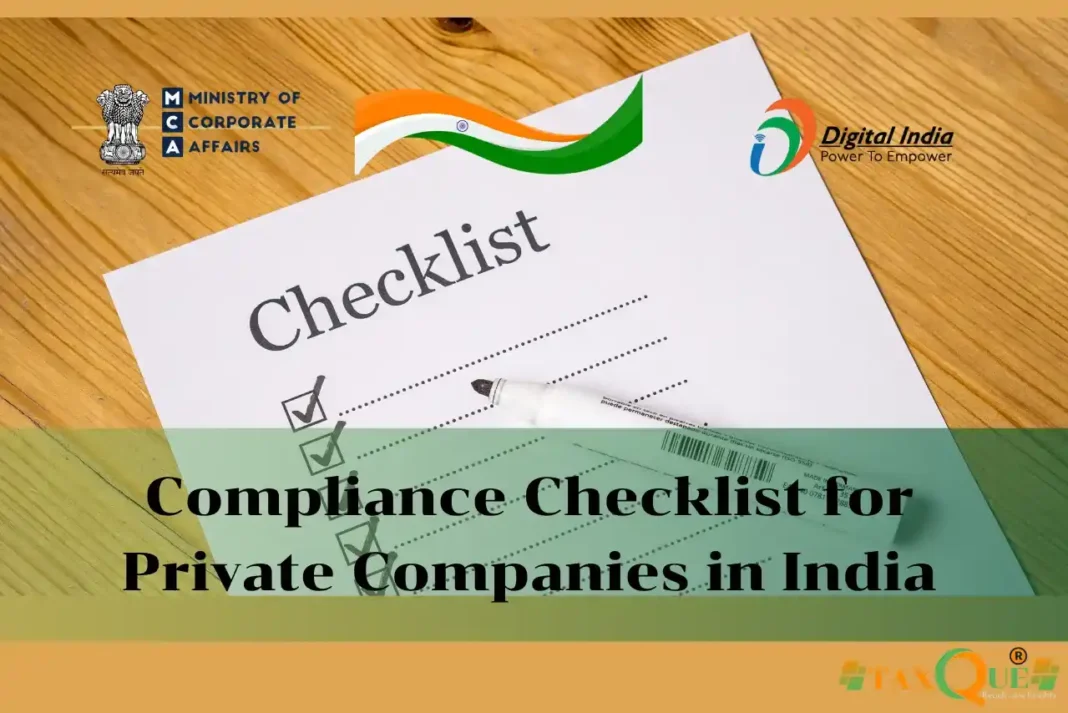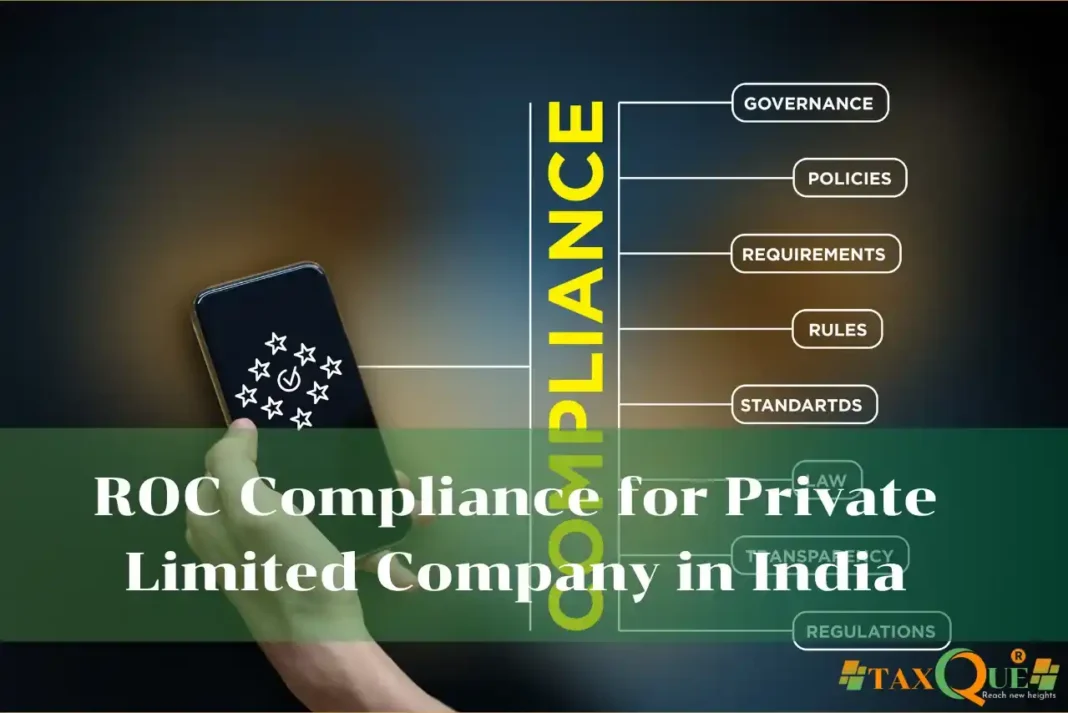Introduction
Compliance calendar for listed companies is a vital tool for businesses listed on stock exchanges in India, ensuring timely adherence to regulatory, tax, and statutory obligations. Listed companies face stringent requirements under the Companies Act, 2013, SEBI (Listing Obligations and Disclosure Requirements) Regulations, 2015 (LODR), and other laws. Missing deadlines can lead to penalties or reputational damage. This blog outlines the compliance calendar for listed companies for 2025, detailing key filings, deadlines, and how TaxQue streamlines compliance.
What Is a Compliance Calendar for Listed Companies?
A compliance calendar for listed companies is a structured timeline of mandatory filings, disclosures, and governance tasks required by regulators like the MCA, SEBI, and Income Tax Department. It helps listed companies track quarterly, half-yearly, annual, and event-based compliances, ensuring transparency and corporate governance.
1. Key Compliance Areas
The compliance calendar for listed companies includes:
- SEBI LODR Compliances: Shareholding patterns, corporate governance reports, and financial results.
- ROC Filings: Annual financial statements (AOC-4) and returns (MGT-7).
- Tax Compliance: ITR, TDS, and GST filings.
- Corporate Governance: Board meetings, AGMs, and secretarial audits.
- Event-Based Disclosures: Director changes, share acquisitions, or material events.
2. Compliance Calendar Overview
Here’s a quarterly breakdown of compliance calendar for listed companies for FY 2025-26:
| Compliance | Regulation/Form | Frequency | Deadline |
|---|---|---|---|
| Corporate Governance Report | SEBI LODR Reg. 27 | Quarterly | Within 21 days of quarter-end |
| Shareholding Pattern | SEBI LODR Reg. 31 | Quarterly | Within 21 days of quarter-end |
| Financial Results | SEBI LODR Reg. 33 | Quarterly | Within 45 days of quarter-end |
| Form AOC-4 (Financials) | Companies Act, Form AOC-4 XBRL | Annual | October 30 |
| Form MGT-7 (Annual Return) | Companies Act, Form MGT-7 | Annual | November 29 |
| ITR-6 (Income Tax Return) | Income Tax Act, ITR-6 | Annual | October 31 (non-audit) |
| Secretarial Audit (MGT-8) | Companies Act, Form MGT-8 | Annual | November 29 |
| TDS Returns (24Q, 26Q) | Income Tax Act | Quarterly | 31st of next month post-quarter |
| GSTR-9 (GST Annual Return) | GST Act | Annual | December 31 |
| AGM | Companies Act | Annual | September 30 |
- Quarterly SEBI LODR: File corporate governance reports (Reg. 27) and shareholding patterns (Reg. 31) within 21 days of quarter-end (e.g., April 21, July 21, October 21, January 21). Financial results (Reg. 33) are due within 45 days.
- Annual ROC Filings: File Form AOC-4 (financials in XBRL format) by October 30 and MGT-7 by November 29 post-AGM (September 30).
- Tax Filings: File ITR-6 by October 31 (non-audit) and GSTR-9 by December 31. TDS returns are due quarterly (e.g., July 31, October 31).
- Event-Based: Disclose director changes (Form DIR-12) or share acquisitions (SEBI SAST Reg. 29) within 7–30 days of the event.
3. Steps to Manage the Compliance Calendar
Follow these steps to ensure the compliance calendar for listed companies is met:
Step 1: Conduct Statutory Audits
- Appoint auditors and conduct secretarial and financial audits before the AGM.
- File Form MGT-8 (secretarial audit for large companies) by November 29.
Step 2: Hold Mandatory Meetings
- Conduct 4 board meetings annually (max 120-day gap) and an AGM by September 30.
- File Form MGT-15 (AGM report) within 30 days of the AGM.
Step 3: File SEBI and ROC Returns
- Submit quarterly SEBI LODR reports (e.g., Reg. 27, 31, 33) to stock exchanges like NSE or BSE.
- File ROC forms (AOC-4, MGT-7) via the MCA portal.
Step 4: Manage Tax Compliance
- File ITR-6, TDS returns, and GSTR-9 as per deadlines.
- Ensure compliance with SEBI’s insider trading (Reg. 7) and takeover (Reg. 29) disclosures.
Step 5: Use Compliance Tools
- Track deadlines with a compliance calendar.
- Leverage TaxQue for automated reminders and expert filing support.
4. Penalties for Non-Compliance
Failing to follow the compliance calendar for listed companies can lead to:
- Fines: ₹5,000/day for late SEBI LODR filings; ₹100/day for ROC forms; ₹5,000 for late ITR.
- Director Disqualification: Non-compliance for 3 years may bar directors.
- Stock Exchange Actions: Suspension of trading or delisting for repeated violations.
TaxQue simplifies the compliance calendar for listed companies with tools for SEBI, ROC, and tax filings. Visit TaxQue’s SEBI compliance guide or ROC services for expert support.
FAQs
1. What are the key SEBI LODR filings in the compliance calendar?
Quarterly filings include corporate governance (Reg. 27), shareholding pattern (Reg. 31), and financial results (Reg. 33), due within 21–45 days of quarter-end.
2. When is the AGM deadline for listed companies?
The AGM must be held by September 30, with a maximum 15-month gap between AGMs.
3. What happens if ROC filings are delayed?
Late AOC-4 or MGT-7 filings incur a ₹100/day penalty, with additional fees for prolonged delays.
4. Is secretarial audit mandatory for all listed companies?
Yes, listed companies with paid-up capital ≥₹50 crore or turnover ≥₹250 crore must file Form MGT-8.
5. How does TaxQue assist with the compliance calendar?
TaxQue offers automated deadline tracking and expert filing for SEBI, ROC, and tax obligations. Explore TaxQue’s compliance services.
Conclusion
The compliance calendar for listed companies is essential for navigating India’s complex regulatory landscape. From SEBI LODR filings to ROC and tax obligations, timely compliance ensures legal standing and investor trust. Platforms like TaxQue streamline the compliance calendar for listed companies with expert tools and support. Stay organized, meet deadlines, and maintain corporate governance in 2025.





